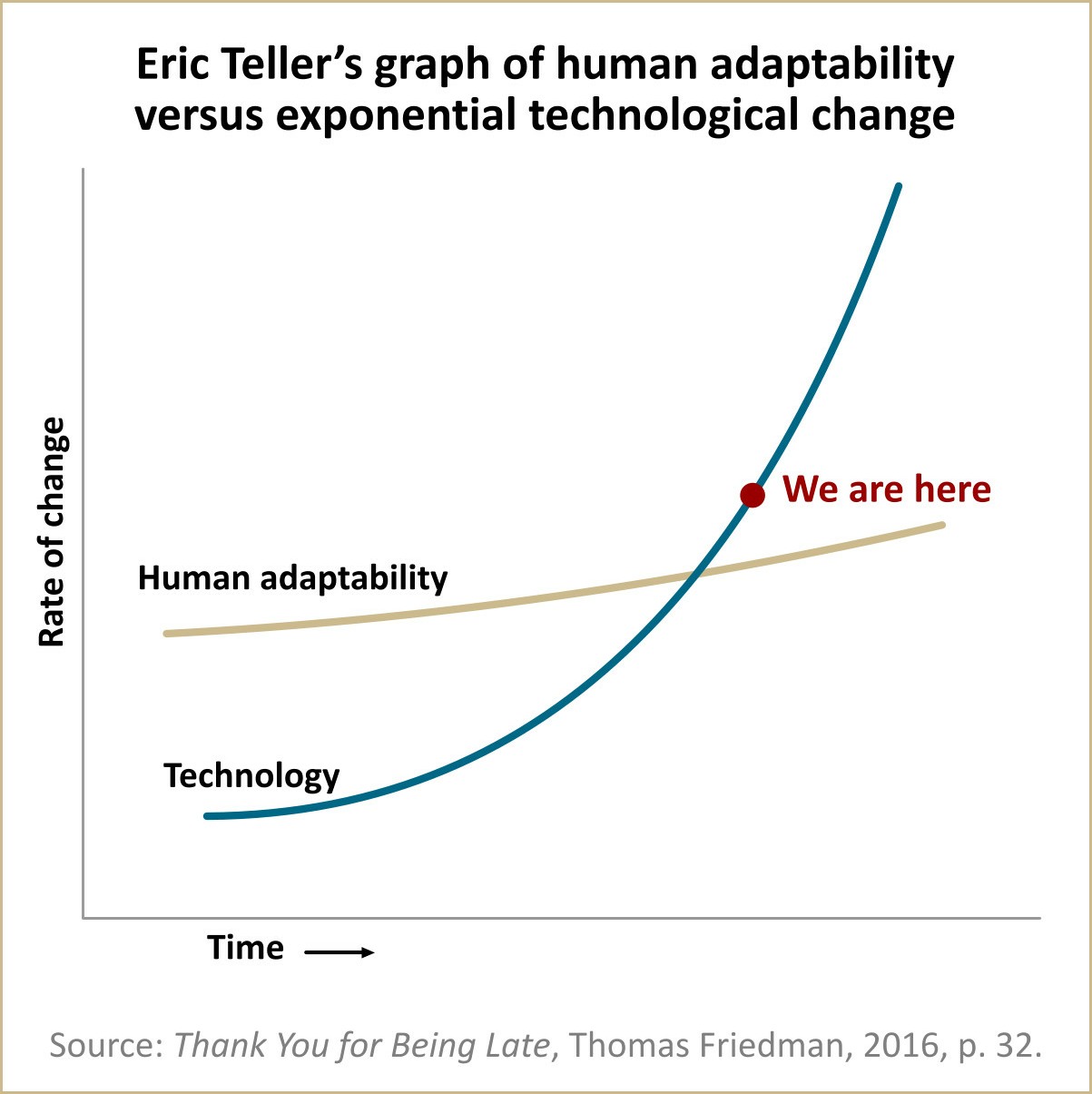What are the economic and social-change trends that make rethinking learning and school design so urgent?
We need to define student success more broadly and more deeply for two reasons.
Today’s learners face an uncertain and rapidly changing future that will demand far different skill sets than what was appropriate in the 20th century.
- We better understand the tasks of adolescence as youth transition from childhood to adulthood, and have not yet fully incorporated this knowledge into school design.
A New World
The new environment for today’s students combines a deepening employment crisis for under-30s, an increasingly fragmented and risky postsecondary education landscape, and a widening opportunity gap between lower-and higher-income students. These are the realities of the world of today’s students.
But let's get specific with these realities:
5 Roadblocks to Bootstrapping a Career
A chronically weak labor market
The accelerating pace of automation
The hard shift to an on-demand workforce
A bias for hiring experience over potential
The job-hunting labyrinth
5 Decisions in Navigating the Work/Learn Landscape
Plotting a path to entry & advantage
Calibrating the work/learn mix
Vetting postsecondary providers
Figuring finances & risk
Cultivating social capital
5 Essentials in Building Social Capital
Caring friends & adults
Near-peers & role models
Mentors & coaches
Networks & weak ties
- Resources & expertise
Tasks of Adolescence
Technological change is accelerating exponentially while we humans are adapting at a slower pace. Young people are similarly stretching their capacity to adapt to accelerated changes in learning, work, and life.
These are the developmental tasks of adolescence.
Reclaiming adolescence as an age of incredible growth & potential
Finding self, strength & direction
Acquiring capability & agency
Overcoming trauma & personal challenges
Building relationships, social capital & guidance
In this time of rapid change, adolescents can’t be isolated from the adult world. Young people need the experiences and “acceleration lane” to grow, mature, and navigate the learning and working world of adulthood.
Implications for Schools and Educators
The “wayfinding decade” between high school and adulthood is longer and tougher than it has ever been. Lifelong learning is the only way to keep up. Students will need broader and deeper competencies before their journey begins.
Explore the Report
Read "Part A: Adolescence in the Age of Accelerations" of the MyWays Student Success Series to take a deeper look at the issues of our changing world.
Take the Next Step
Are you ready to do more with these ideas? Use the tools in "Exercise One: Why a Changing World Requires that We Reimagine Public Schools."
Go to Big Question 2
Are you ready to look into the competencies students need to succeed in this changing world? Check out the next question about redefining SUCCESS.




